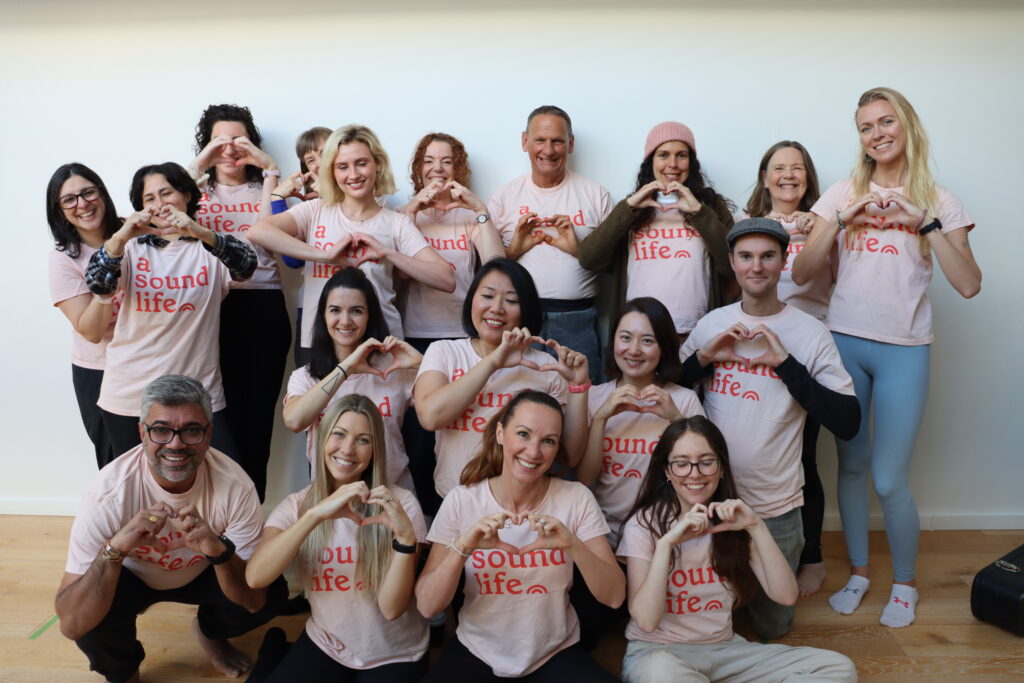You likely know that feeling safe is a fundamental human need.
But did you know that your voice can be a tool for feeling safe?
It may sound strange, but using your voice in particular ways can help you access feelings of calm and safety. By making gentle sounds such as humming and toning, you can begin to reset the nervous system and experience more ease.
How does this work?
Gentle sounds, such as humming, calm the vagus nerve, which connects to the larynx (voice box) (Thibodeaux) as well as the middle ear, chest, lungs, and gut. When we hum and make other similar sounds, we calm and soothe this nerve. This action “creates a positive state of relaxation and social engagement” and “has a calming, soothing effect, and promotes rest and restitution” (Rosenberg 34). By activating the vagus nerve in this way, we stimulate the “Social Engagement System” (Porges) which is our “face-heart” system that links the ventral vagus (heart), the face and head (facial expressions), how we listen (auditory), and how we speak (vocalisation). (Porges, qtd in Dana 7). The soothing sounds vibrate and calm this social engagement system.
What are some examples?
Think of a wonderful food or meal that you love, which may inspire the sound “Mmmmm.” With your lips together, gently make the “Mmmmm” sound and extend it a little longer than you might normally. Note any resonance as you simply make the sound. Now, put your hands on your cheeks and make this sound again. Let yourself feel the sound in your hands, noting any vibration that arises. Close your eyes, take a deep breath, and exhale again on “Mmmm,” paying attention to the sound and resonance once more.
Another example is to put your hand on your chest, which the Turkish poet Nazim Hikmet calls “the jewel in the left side of your chest” (Thompson 15), and say an extended, “Ohhhhh” as if you have just learned something very important. Say it a few times (keeping your hand on your chest), noting again any vibration or resonance in your chest.
As you may have noticed with these exercises, as soon as you make these sounds, you begin to resonate and vibrate. What you are doing is toning your nervous system. I invite you to come back to this simple tool throughout the day, particularly if – or when – you feel dysregulated.
What are other ways this practice works to help me self-regulate?
Incorporating gentle body movements as well for a fully embodied experience can create greater self-regulation. In addition to using the voice and hands, using arm movements and gentle stretches help to engage with the sound more deeply. An example of this is to stretch your arm, point your finger, and make an “Ahhhhh” sound as you make the circle. As your finger moves up, let the sound go up in pitch; as it comes down, let the pitch come down. (If “pitch” makes little sense, let the emphasis of the word “Ahhhh” shift as your arm moves in a circle.) Repeat this several times, going slowly and paying attention to the sound. If you are looking at your computer, perhaps you can draw an imaginary circle around the computer extending each direction gently and, if it feels right, playfully. With the body engaged along with the voice, we begin to integrate and befriend the entire nervous system with tenderness.
What if I don’t like my voice or feel afraid to make sounds?
You are not alone! Many people share this feeling. If this describes you, rather than making sounds, I invite you to try the exercises as you inhale and exhale, as the breath is the foundation of vocal sound. Your breath makes subtle sounds, and you are invited to let that be the practice instead of making audible sounds. Sound Passage is not about singing; Sound Passage is about connecting with the nervous system in tender and gentle ways.
Source: Trauma Research Foundation




